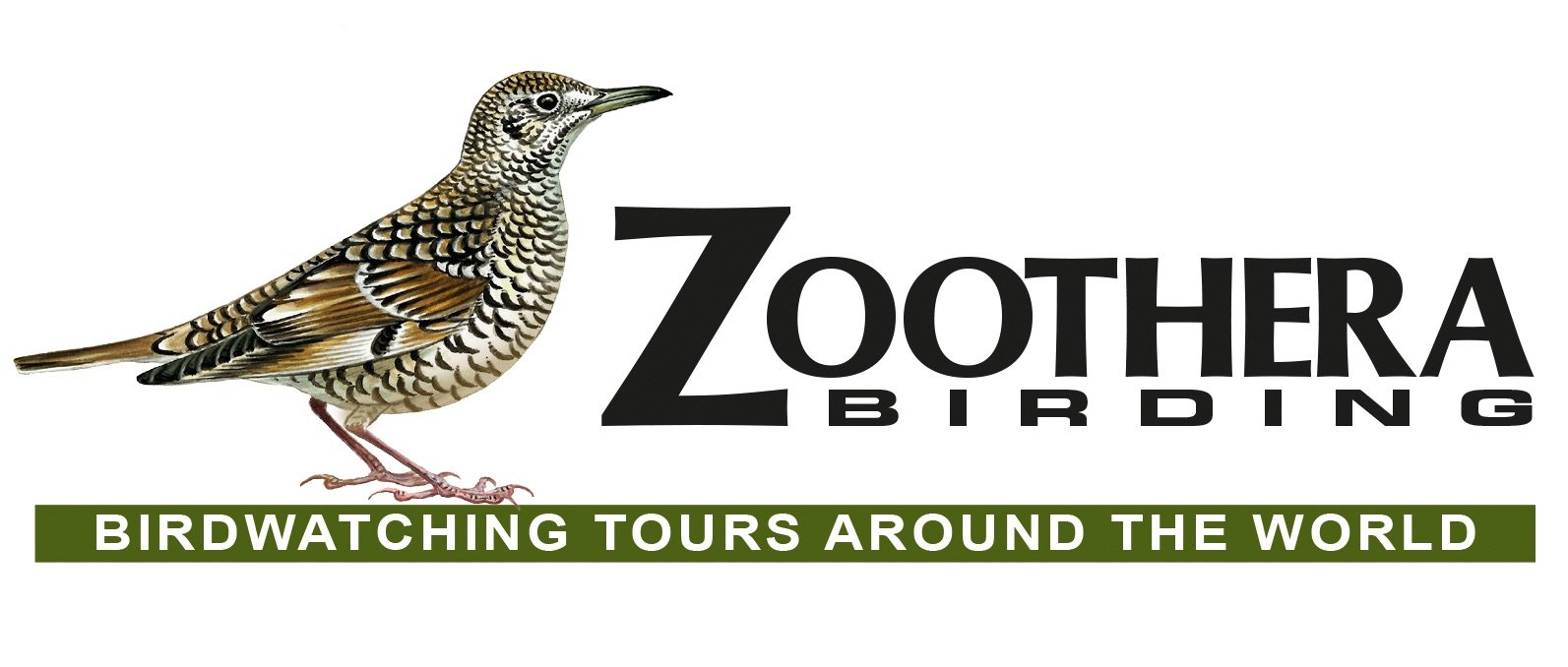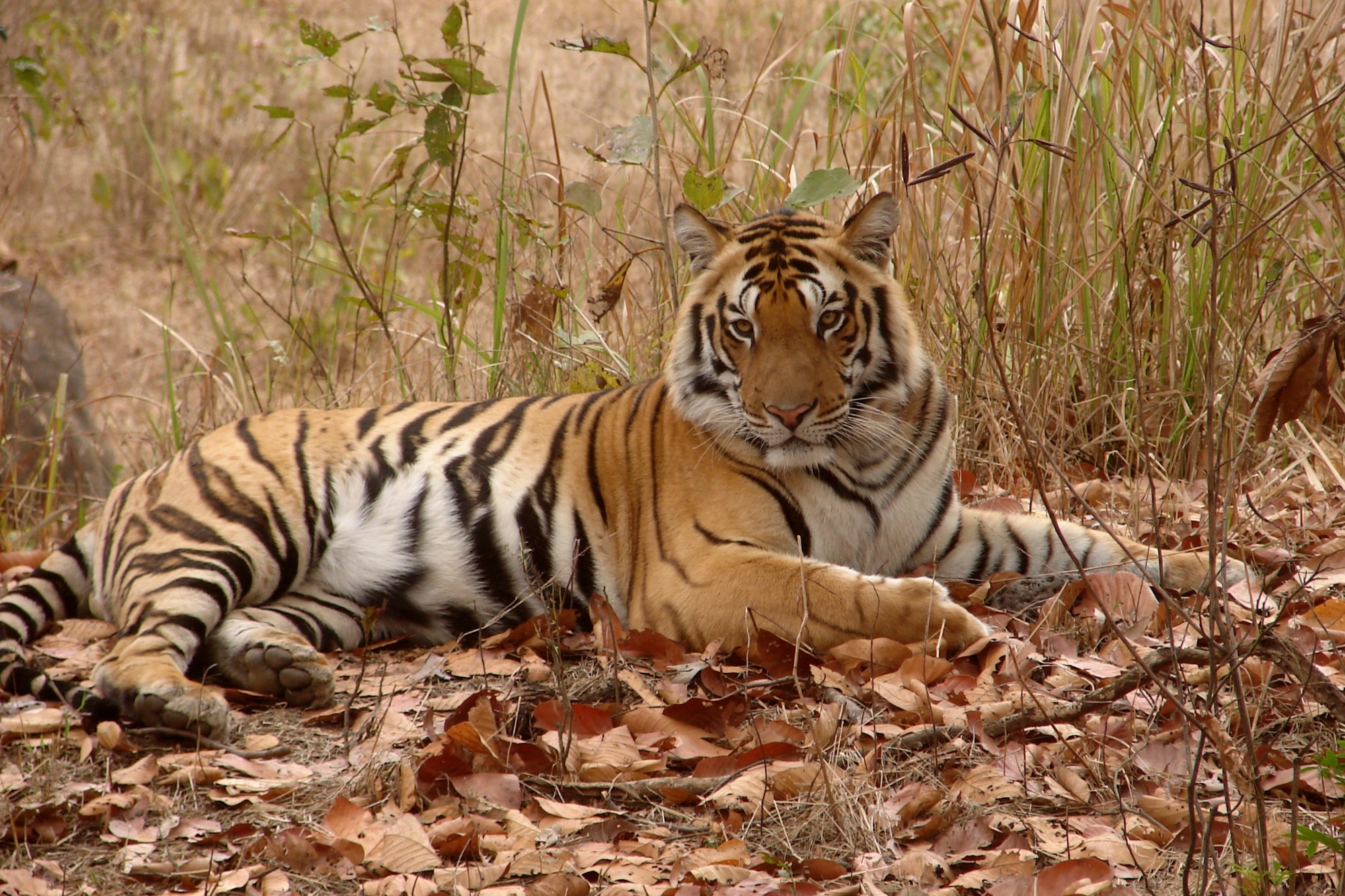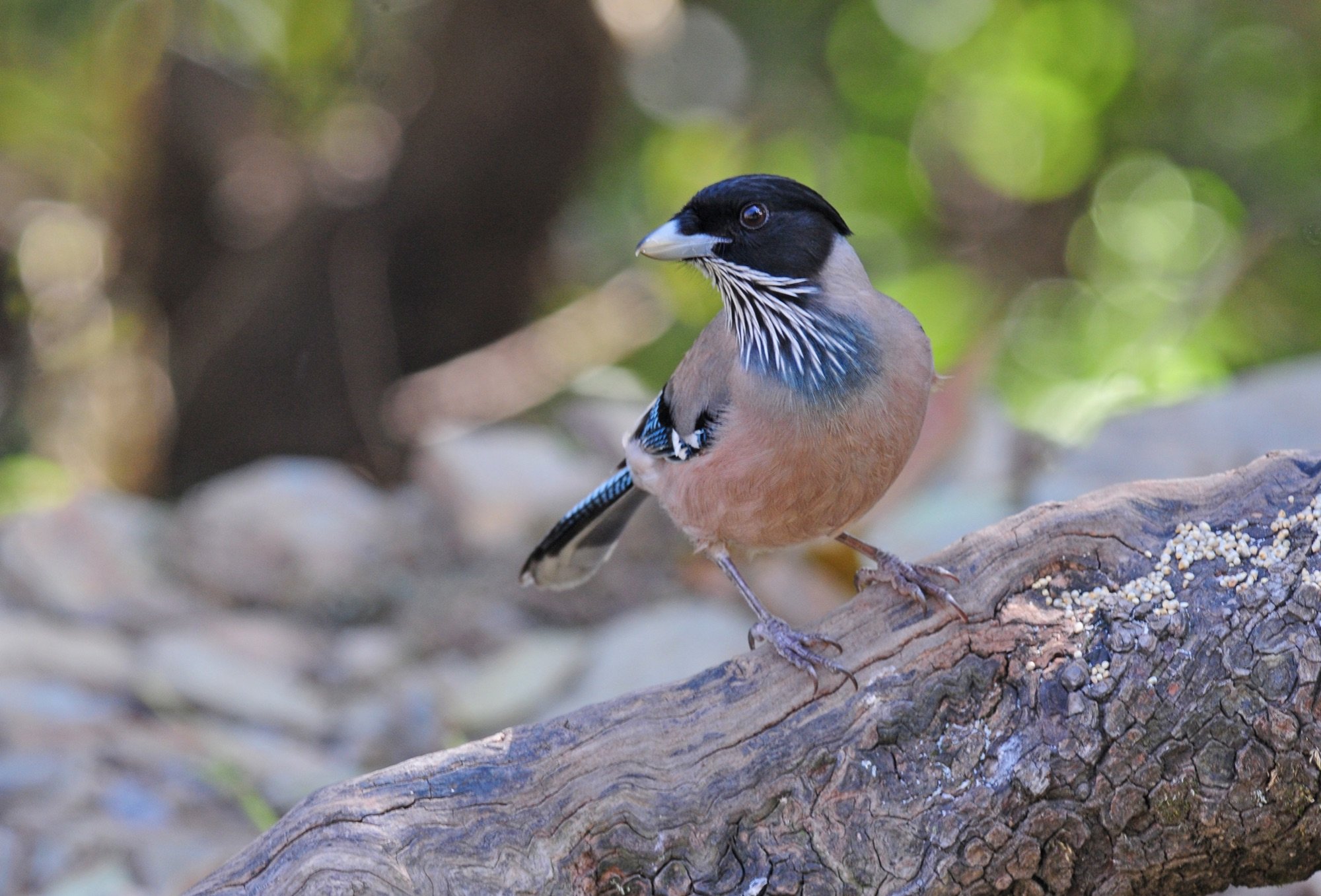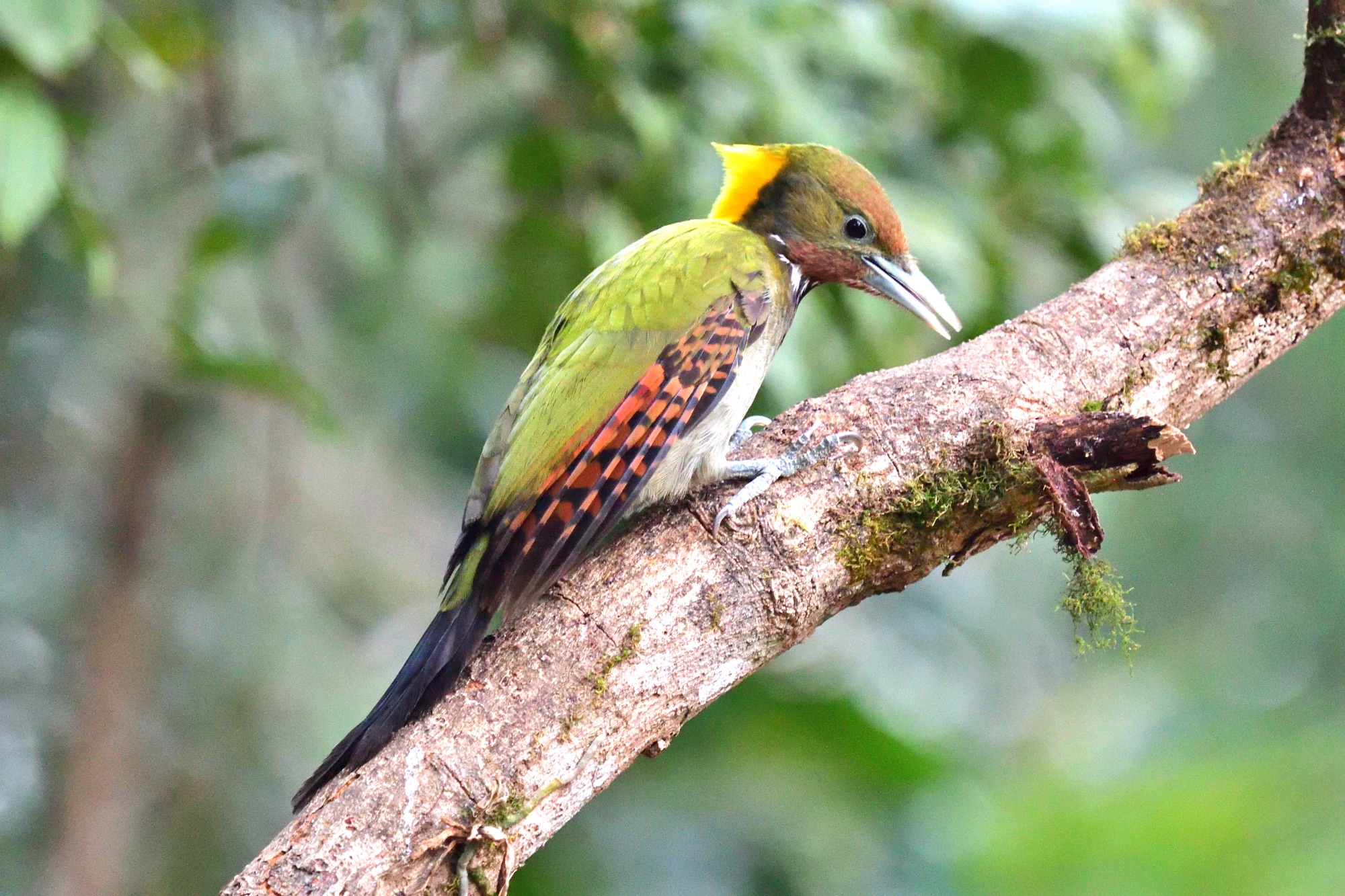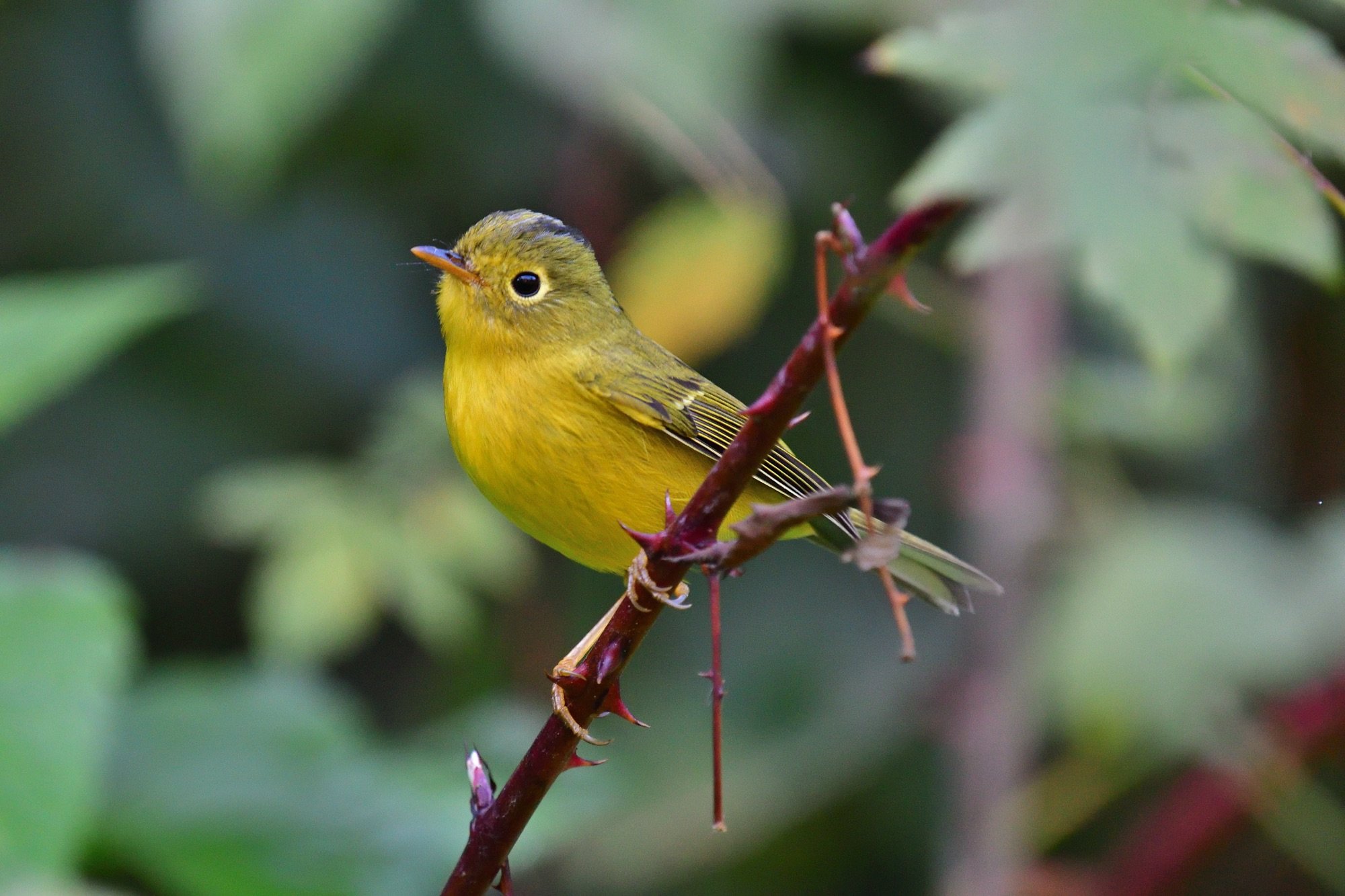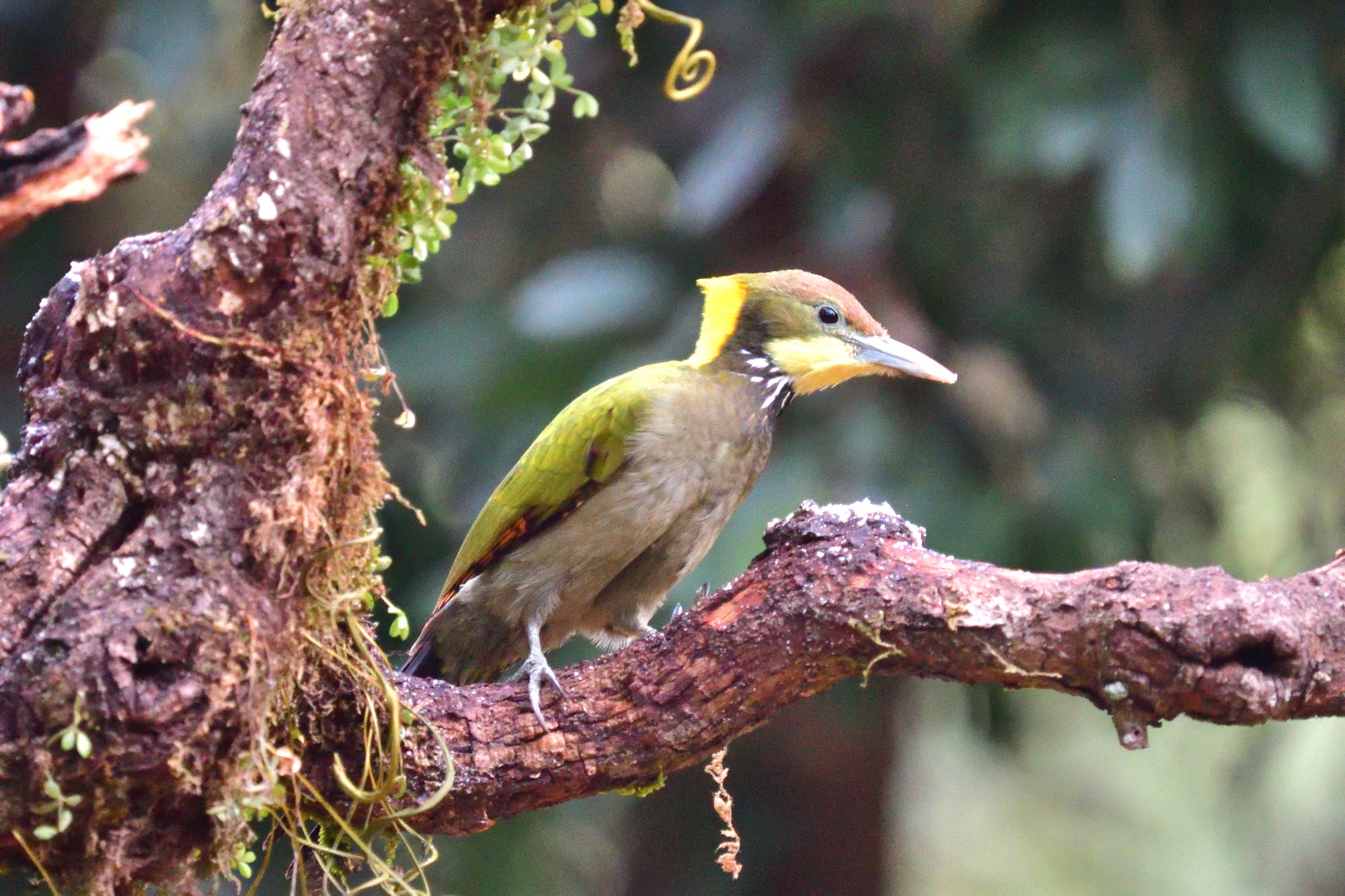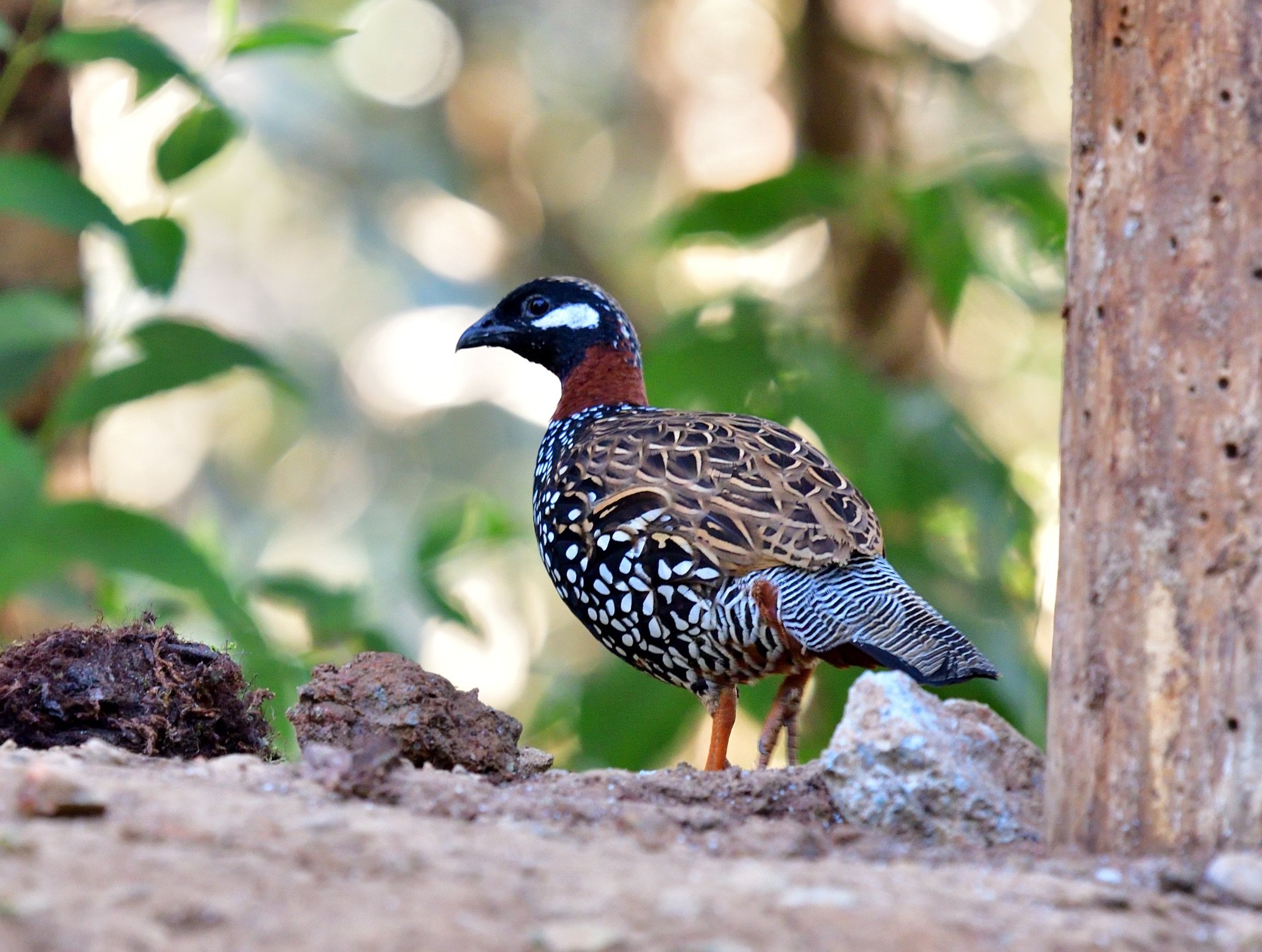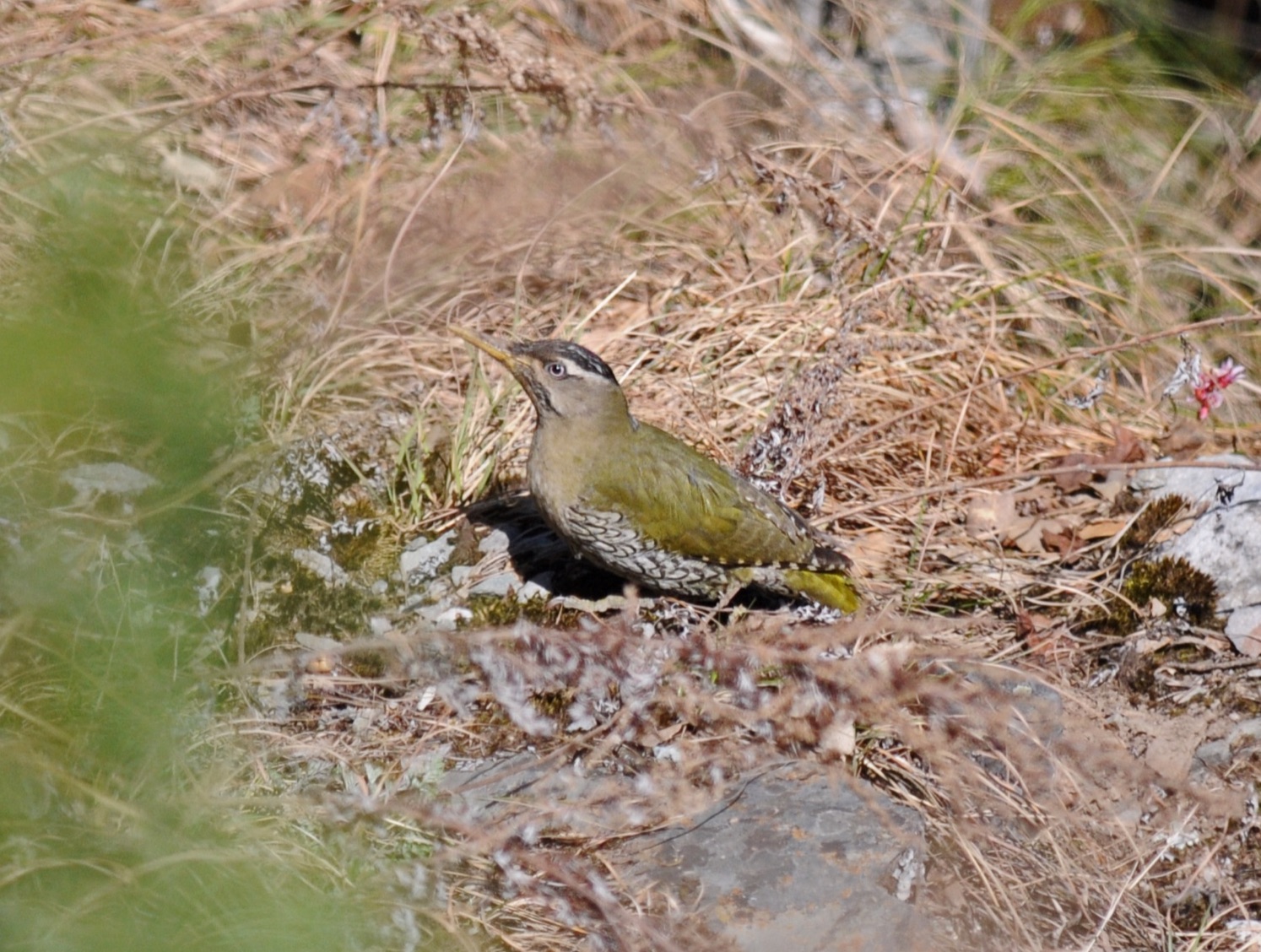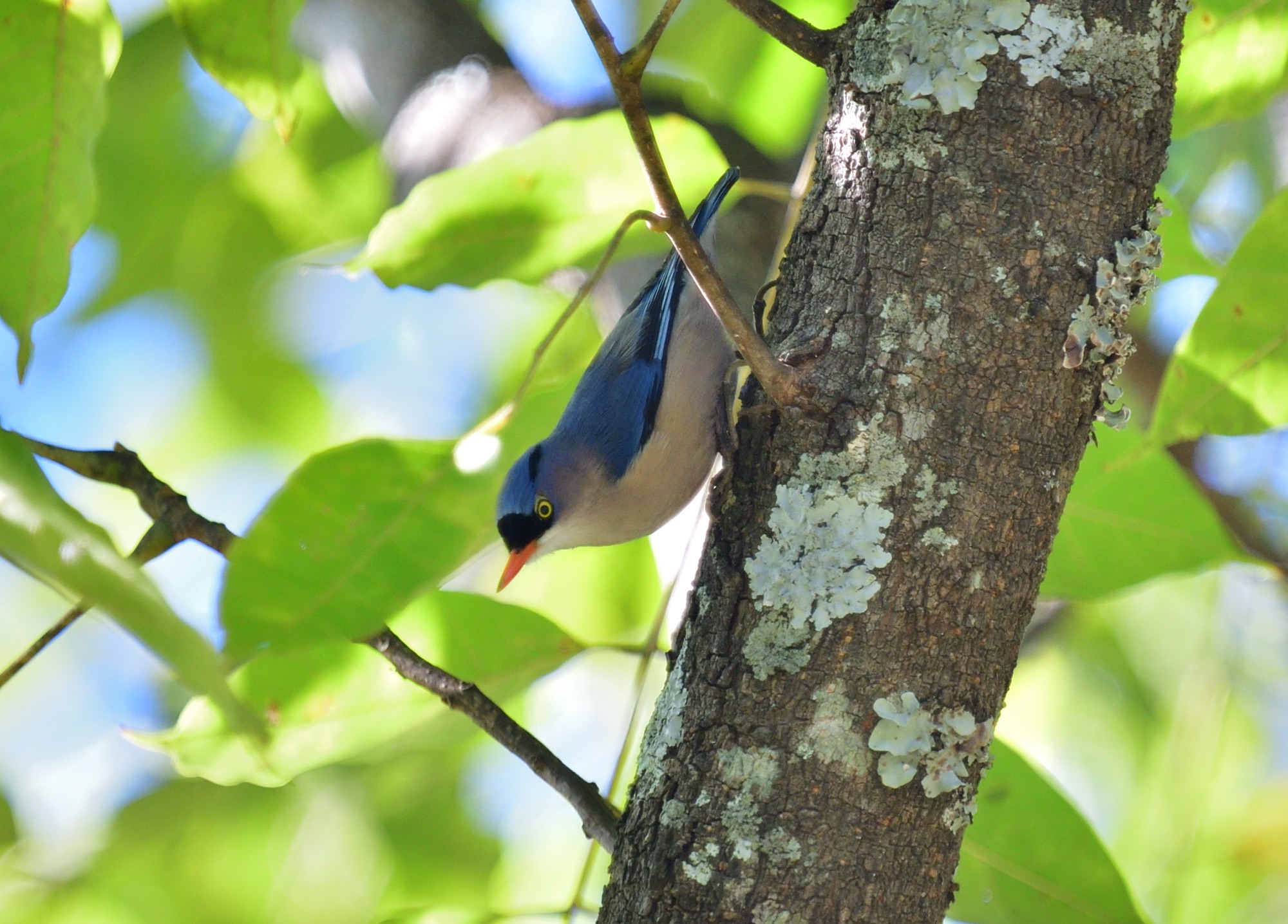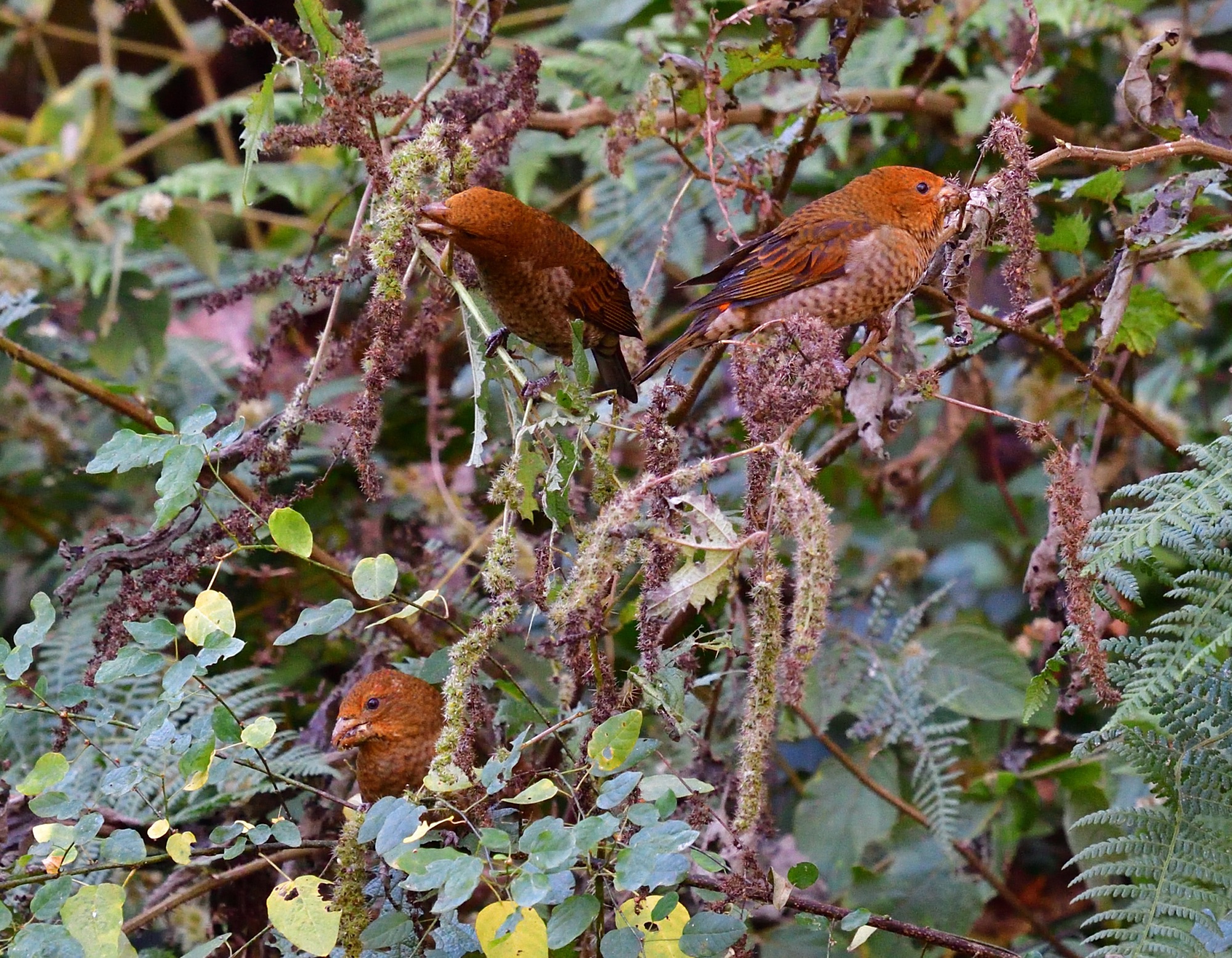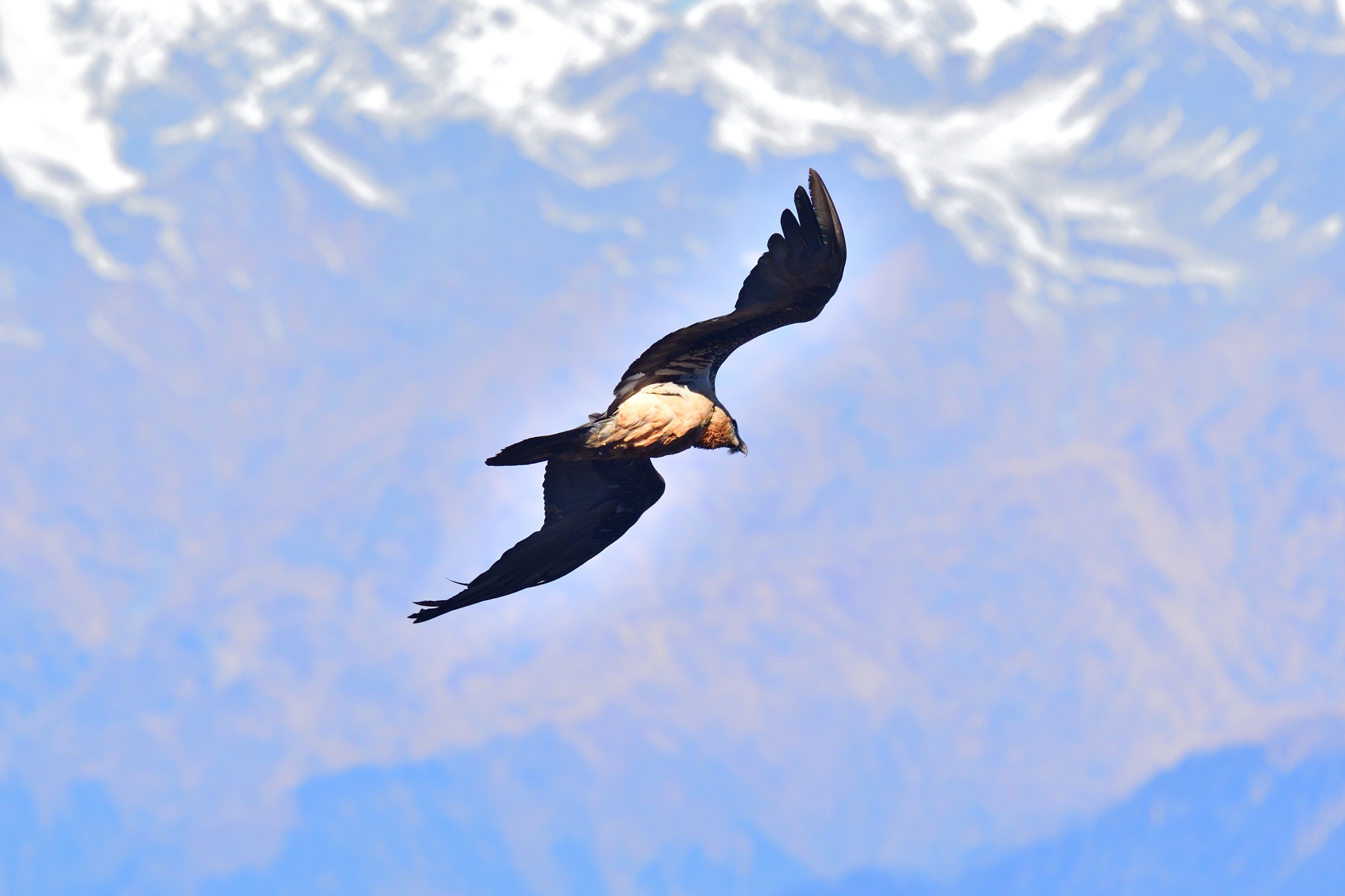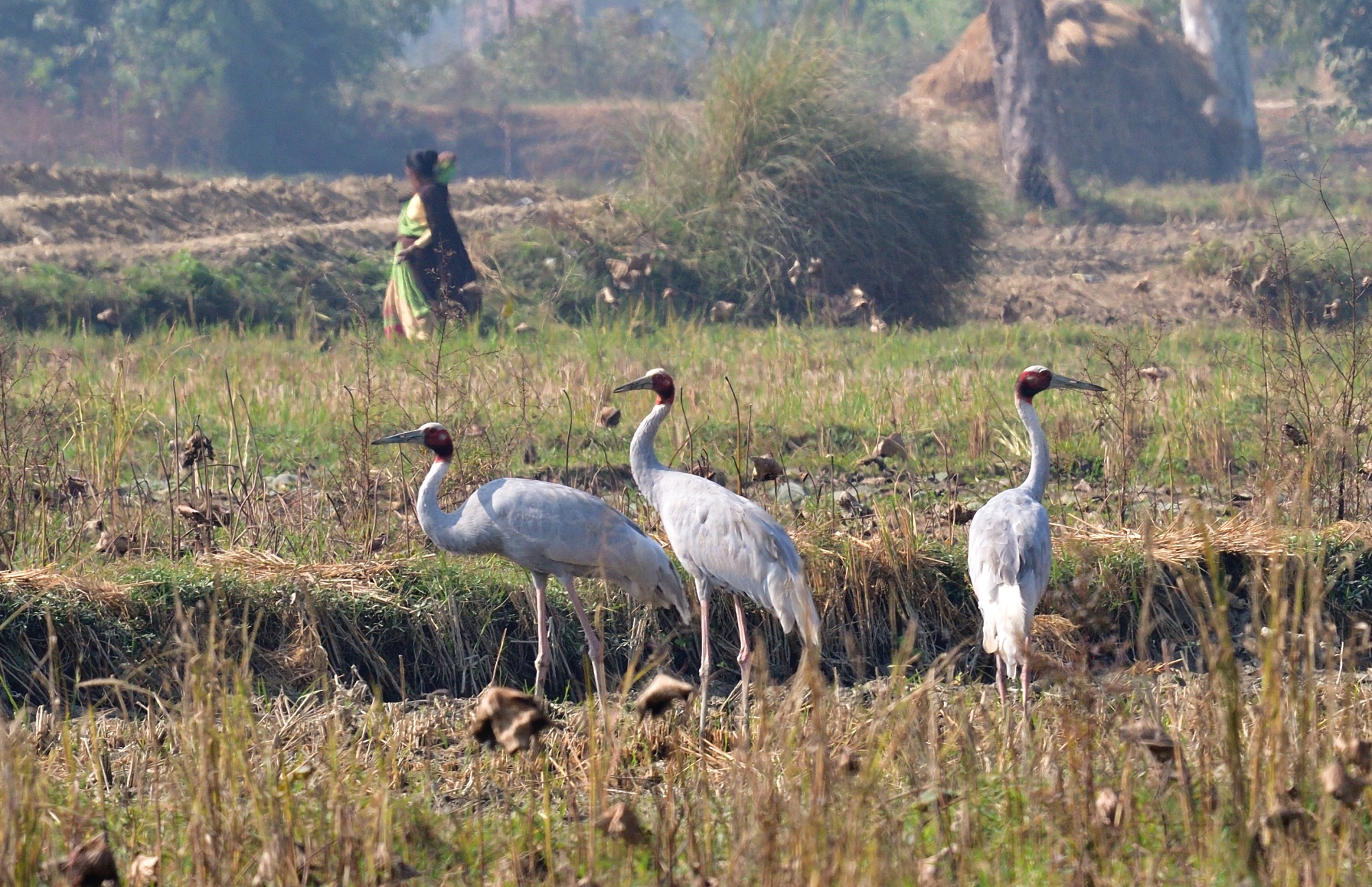INDIA - CLASSIC HIMALAYAS
Day 1 Arrival in Delhi
Plan on arriving today in Delhi, India. Upon arrival you will be transferred to a nearby hotel where you will meet up with the rest of the group at dinner and can discuss the exciting adventure that awaits. If time permits we can pay an afternoon visit to Okhla Bird Sanctuary situated on the Yamuna River, This is a remarkable place where birds are numerous and easy to see and there will be quite a few species we definitely won’t have encountered in the foothills of the Himalayas and in particular we will search for White-tailed Stonechat, Striated Grassbird and Yellow-bellied Prinia. However, most of our attention will be drawn to the open water where huge flocks of familiar wildfowl also host the slightly more exotic Indian Spot-billed Duck and possibly Comb Duck. A flock of Greater Flamingo’s are usually present here, along with Garganey, Bar-headed and Greylag Geese, whilst flocks of Brown-headed Gulls and smaller numbers of Steppe Gulls are very conspicuous. Along the water’s edge and in the marshes we can find Purple Heron, Glossy and Black-headed Ibis, Indian Peafowl, White-tailed Lapwing, Common Babbler, Pied Bushchat Graceful Prinia, Red Avadavat and Indian Silverbill. Sometimes in the drier areas there is Red-naped (Indian Black) Ibis, as well as Grey Francolin, Spotted Owlet, Yellow-footed Green-pigeon, Red Collared-dove, Purple Sunbird, Hume’s Warbler and Siberian Chiffchaff, whilst overhead there will be numerous Black and Black-eared Kites. This is a perfect way to begin our Indian birding adventure and we would hope to see around 80 species quite easily in just a couple of hours birding. Night in Delhi.
Day 2 Delhi - Corbett National Park
An early departure will see us driving across the Gangetic plain and up into the shadow of the mighty Himalayas to a good lodge situated at the edge of the famous Corbett National Park. Our final destination today is Tiger Camp Lodge, which is situated on the periphery of Corbett National Park where the thick jungle that borders the camp and the close proximity of the Ramganga River makes this an ideal base for birding. This is not actually a camp as we would call it, as there are no tents but accommodation is in air-conditioned, en-suite cottages with hot showers and ‘western’ toilets. This is a particularly pleasant site to while away a few hours and bird the grounds and surrounding area, and we can find Red Junglefowl, River Lapwing, Pin-tailed Green-pigeon, Alexandrine Parakeet, Lineated Barbet, Common Tailorbird, Oriental Magpie-robin, Jungle and Large Grey Babblers, Orange-gorgeted Flycatcher, Yellow-bellied and White-throated Fantails, Pied Flycatcher-shrike, Himalayan and Black-crested Bulbuls and White-bellied Drongo. Our guides may well have a Tawny or Brown Fish-owl staked out at a daytime roost as well, whilst rarer species that are possible include Rufous-bellied Eagle and Chestnut-headed Tesia. Night at Tiger Camp.
Days 3 – 4 Corbett National Park
After an early breakfast we will set out on the exciting jeep drive to the Dhangarhi entrance gate of Corbett National Park. This famous reserve was set up for Project Tiger in 1935 and covers 520 square kilometres, and protects a large tract of forest and grassland at the base of the Himalayas. Due to the presence of Tiger, exploration within this magnificent park on foot is not an option, and is only allowed in areas adjacent to the compound at Dhikala or if accompanied by an armed guard. Located between 400m and 1100m the reserve offers a variety of habitats from dense jungle and mature forests, to open grassland, broad river valleys and rolling hills. During the winter months the park’s already impressive birdlist is enhanced by large numbers of birds moving down here from areas higher up in the Himalayas, and this contributes in giving the park one of the richest avifaunas in northern India at this time of year. Our jeep safari through the stately dense Sal jungle may well last for most of the morning as we stop to watch numerous birds or listen intently to the sounds of the jungle coming to life. With much luck we could hear the alarm calls of Chital or Common Langurs indicating the presence of a predator but we would need a great deal of luck to see a Tiger or Leopard here. Our route takes us through impressive forest and grasslands, and across several dry river courses which will enable us a small insight into the spectacular and varied amount of wildlife present in this famous park. The wealth and variety of bird life here is incredible and there are many exciting possibilities, including Black Francolin, Pallas's and Lesser Fish-eagles, Eastern Imperial Eagle, Collared Falconet, Oriental Pied Hornbill, Jungle Owlet, Himalayan Flameback, Grey-capped Pygmy, Scaly-bellied and Streak-throated Woodpeckers, Red-breasted Parakeet, Brown-headed Barbet, Himalayan Swiftlet, White-rumped Needletail, Crested Treeswift, Blue-bearded Bee-eater, Stork-billed Kingfisher, Golden-fronted Leafbird, Black-hooded Oriole, Large Woodshrike, Common Iora, Red-whiskered Bulbul, Rufous-bellied Niltava, Himalayan Aberrant Bush-warbler, Tickell’s Leaf-warbler, Indian Robin, Long-billed Pipit, Red Avadavat, Spangled Drongo, Rufous Treepie, Common Rosefinch, and both Chestnut-eared and Crested Buntings. The lodge is a excellent place to relax, with great views over the seasonally flooded lake below, and it is often possible to see a good selection of birds like Black-necked and Woolly-necked Storks, Cinereous and Eurasian Griffon Vultures, Black-shouldered Kite, Hen Harrier, Changeable Hawk-eagle, Tawny Fish-owl, Crested Treeswift, Indian White-rumped Spinetail, Large-tailed Nightjar, Jungle Owlet, Pin-tailed Green-pigeon, Velvet-fronted Nuthatch, Orange-bellied Leafbird, Blue-winged Minla, White-crested Laughingthrush, Whiskered Yuhina, Purple and Crimson Sunbirds, and Grey-headed Starling (a recent split from Chestnut-tailed Starling).Red Junglefowl, Spotted Dove, Grey-capped Pygmy Woodpecker, Scarlet Minivet and Whistler’s Warbler, plus mammals such as Sambar, Spotted Deer (Chital) and Golden Jackal. After lunch at Dhikala we will take a jeep drive into the tall grassland, where species such as Chestnut-capped and Yellow-eyed Babblers, Bright-headed Cisticola, Plain Prinia, Grey-sided Bush-warbler, Plain Prinia, and both White-tailed and Siberian Rubythroats may be found, and where in the last few years White-throated (or Hodgson’s) Bushchat has been seen regularly.
Hopefully you will appreciate the ornithological advantages of staying here for a night, as the jungle surrounding the camp is alive with birds in the early morning. A short walk along the nearby trails and scanning of the river can reveal many exciting finds such as Black Stork, Pallas’s Fish-eagle, Great Thick-knee, Himalayan Rubythroat and Smoky Warbler, with the evocative sounds of Indian Peafowl ringing out across the forest. But our main priority this morning is to take another jeep safari through the grasslands and dense forests and no doubt we’ll come across a wide range of mammals such as Wild Boar, Golden Jackal, herds of Spotted Deer, Hog Deer, Sambar, Indian Muntjac, Smooth-coated Otter, Grey Langur and Rhesus Macaque. Herds of wild Asian Elephants inhabit the reserve and can sometimes be observed browsing at the forest edge, the strange fish-eating Gharial can also be found and there is always a chance of viewing the most impressive mammal on the planet, Tiger. There’s no more exciting feeling than tracking Tigers and although they are difficult to find due to the dense jungle and tall grassland providing more than adequate cover for them to hide in, we may well be lucky! After an exciting early morning jeep safari through the grassland on Day 4 we will return for breakfast, and then spend the rest of the morning on a watchtower overlooking a water-hole, but in the afternoon we must head out of the park stopping en-route for birding, and who knows what lies in wait for us? Maybe a noisy gang of huge Great Slaty Woodpeckers, or an even bigger Great Pied Hornbill calling raucously from the top of a tree, a skulking Puff-throated Babbler or Long-billed Thrush, or even a musical White-rumped Shama perched in the shadows. Nights at Dhikala, Corbett National Park.
Day 5 Corbett - Pangot
This morning we will visit some productive areas outside the park boundary which gives us our best chance of seeing Great Pied and Oriental Pied Hornbills. Other possibilities include White-rumped Vulture, Steppe and possibly Tawny Eagles, Streak-throated Woodpecker, Plum-headed Parakeet, Bengal Bushlark, Long-billed Pipit, Golden-fronted Leafbird, Southern Grey Shrike, and our last visit produced the first record of Spanish Sparrow for the region. So anything is possible! After lunch we’ll set out on the drive up to Pangot, situated several miles above the old hill station of Nainital. We will follow a winding road that gradually ascends in a series of loops along the forested mountainsides and need to keep an eye out for Red-headed Vulture, Black-rumped Flameback, Slaty-backed and Little Forktails, Long-tailed Broadbill, Green-tailed Sunbird, Scaly-breasted Wren-babbler, Ashy-throated Leaf-warbler, and both Ashy and Bronzed Drongos. Along a fast flowing river species such as Changeable Hawk-Eagle, River Lapwing, Lesser Pied and Crested Kingfishers, Brown Dipper, White-capped Riverchat, Plumbeous Water-Redstart, Wallcreeper, White-browed Wagtail and Ashy-crowned Sparrow-lark can be seen. Other species here and at nearby Corbett Falls include Himalayan Flameback, Scarlet Minivets, Black-hooded Oriole, and both Indian (formerly Brown-capped) and Grey-capped Pygmy Woodpeckers, Little Pied Flycatcher, Hume’s, Whistler’s, Tickell’s Leaf and Blyth’s Leaf Warblers. We should arrive in plenty of time at the wonderfully located Jungle Lore Birding Lodge and a great selection of Himalayan birds. This is one of the finest birding lodges in India and it is always a pleasure to be here. Apart from the wonderful view, there is a feeding station below the veranda where a huge flock of White-throated Laughingthrushes come in to feed, and are joined by Streaked, Striated and Red-headed Laughingthrushes, as well as the range-restricted Black-headed Jay. On our previous visit a Black-throated Accentor also came in to bathe at the drinking pool, Spot-winged Grosbeaks were feeding in the garden and a Brown-fronted Woodpecker came to the feeders! The gardens are also frequented by the beautiful Pink-browed Rosefinch, as well as Himalayan Greenfinches, sometimes Spot-winged Grosbeak, Rock Bunting, flocks of Slaty-headed Parakeets fly in tight formations across the valley below, whilst a Lammergeier often soars right overhead. We have 3 nights at Jungle Lore Birding Lodge, Pangot.
Days 6 – 7 Pangot - Cheena Peak - Kilbury
Well over 250 species have been recorded in the immediate vicinity and during the course of our stay we will visit all the best birding sites such as Cheena Peak, Kilbury and Timla Pani, Pangot Village, Baggar and Gughu Khan where all our birding will be from the road and wide, well worn trails with very little uphill walking involved. This is a remote wilderness 15km from Nainital and is home to a varied selection of typical Himalayan birds, so our first morning walk could be very interesting with many regular species present such as Red-breasted Parakeet, Fulvous-breasted Woodpecker, Blue-throated Barbet, Maroon Oriole, Green-backed Tit, Himalayan Bulbul, Grey-backed Shrike, Dark-throated Thrush, Chestnut-bellied Nuthatch, Scarlet Minivet, Striated and Grey-breasted Prinias, Oriental White-eye, Lemon-rumped and Grey-hooded Warblers, Red-billed Blue Magpie and Grey Treepie. We will have an easy walk down the road from our lodge in search of two of our major target species here, Scaly-bellied and Himalayan Woodpeckers that frequent the forest edge. Other species we can find in the immediate vicinity include Mountain Hawk-eagle, Brown-fronted Woodpecker, Large Hawk-cuckoo, Large Cuckooshrike, White-tailed Nuthatch, Bar-tailed Treecreeper, Tickell’s, Ashy-throated and Buff-barred Leaf-warblers, Greenish Warbler, Tickell’s Blue Flycatcher, Blue-capped Redstart, Whiskered Yuhina and Large-billed Crow.
One morning we will drive higher up the mountain in search of such star birds as Koklass and Cheer Pheasants, Fire-fronted Serin, Spot-winged Tit, Mrs Gould’s Sunbird, Upland Pipit and Rufous-breasted and Altai Accentors. A secluded trail takes us up through Oak and Rhododendron forests towards Cheena Peak, which at 2610m offers views of the snow-clad Himalayan peaks including Nanda Devi which at 7816m is India’s second highest mountain. This is a very good birding area as the viewpoint is usually alive with birds such as Grey-headed Canary Flycatcher, White-throated Laughingthrush and Grey-winged Blackbird. Further exploration of the nearby hills and scanning of the mountains will be worthwhile with some excellent and much-wanted species to be found such as Common Hill-partridge, Black Francolin, Lammergeier, Himalayan Griffon Vulture, Indian Black Eagle, Bonelli’s Eagle, Red-breasted Parakeet, Chestnut-bellied Rock-thrush, Chestnut Thrush, occasionally Long-billed Thrush, Blue Whistling-thrush, Himalayan Red-flanked Bush-robin, Small Niltava, Orange-bellied Leafbird, White-browed Shrike-babbler, Golden Bush-robin, Scaly-breasted Wren-babbler, Ashy and Himalayan Black Bulbuls, Chestnut-crowned Bush-warbler, Black-faced Warbler, Crimson Sunbird, Brown Bullfinch, Fire-breasted Flowerpecker and Dark-breasted Rosefinch. This is a truly wild area where the numerous perennial and seasonal creeks are home to an amazing variety of flora and fauna including Leopard, Yellow-throated Marten, Himalayan Palm Civet, Ghoral, Barking Deer and Sambar. Nights at Pangot.
Days 8 - 9 Pangot - Sat Tal
After breakfast we will set out on the two hour drive to Sat Tal that takes you on one of the world's more spectacular mountain roads as we descend from the Kumaon Hills, passing through the forested area of the Cheena Peak Range via Snow View Point and Kilbury. Along the way there is a path beside a fast-flowing mountain stream we can follow where Brown Dipper, both Slaty-backed and Little Forktails reside and the surrounding forest has Rufous-bellied Woodpecker, Speckled Piculet, Rufous-bellied Niltava, and other typical Himalayan birds. Sat Tal is a truly exciting area and a fabulous place to wake up to in the mornings with a multitude of birds singing and calling all around us. We shall spend these two days in and around Sat Tal (1350m), birding amidst dense forest surrounding a series of small lakes where we will look for Kalij Pheasant, Asian Barred Owlet, Great Barbet, Speckled Piculet, Greater Flameback, Lesser and Greater Yellownapes, Fulvous-breasted and Grey-headed Woodpeckers, Oriental Turtle-dove, Chestnut-bellied and Velvet-fronted Nuthatches, Long-tailed Shrike, Small-billed Scaly Thrush, Tickell’s and Dark-throated Thrushes, Black-chinned Babbler, Himalayan Orange-flanked Bush-robin, Olive-backed Pipit, Taiga, Slaty-blue, Rufous-gorgeted and Verditer Flycatchers, Small Niltava, White-throated and Yellow-bellied Fantails, Spotted Forktail, Blue-fronted Redstart, White-capped Riverchat, Plumbeous Water-redstart, Grey Bushchat, Red-billed Leiothrix, Rusty-cheeked Scimitar-babbler, the vocal and very attractive White-crested as well as Striated, White-throated, and Red-headed (formerly Chestnut-crowned) Laughingthrushes, Blue-winged Minla, Mountain Bulbul, Long-tailed Minivet, Grey-hooded and Whistler’s Warblers, Black-breasted and Crimson Sunbirds, White-bellied (Yuhina) Erpornis, Red-headed (formerly Black-throated) Tit, Green-backed and Black-lored Yellow Tit, Fire-breasted Flowerpecker, Rufous Sibia, Grey Treepie, Red-billed Blue Magpie, White-capped Bunting and Russet Sparrow. Nights at Sat Tal.
Day 10 Sat Tal - Gwaldam
We can spend the early morning to try and see some of the more shy and skulking species such as Himalayan and Siberian Rubythroats, Chestnut-headed Tesia, Rufous-chinned Laughingthrush, Himalayan Aberrant and Grey-sided Bush-Warblers and both Black-throated and Rufous-breasted Accentors. After breakfast we will set out on the long drive to Gwaldam where we will spend the night in a local hotel.
Day 11 Gwaldam - Chopta
After a pre-breakfast bird walk we will set out on the drive to Magpie Jungle Camp arrving in time for a late lunch. We'll probably even have a little siesta before exploring the surrounding area, which can be good for Pink-browed and Dark-breasted Rosefinches and a variety of other Himalayan species. Night in Magpie Jungle Camp.
Days 12 - 13 Chopta - Kedarnath Wildlife Sanctuary
There will be much excitement as we set out to search for the star bird of the tour - Himalayan Monal amidst the scenic splendour of the Kedarnath Wildlife Sanctuary. We have two full days in this amazing Himalayan area to work on getting better and better views of monal, as well as searching for the special birds of the area. And there are some awesome specialities here such as Cheer Pheasant, Snow Pigeon, Variegated Laughingthrush, Alpine Thrush, Red-headed Bullfinch, Black-and-yellow Grosbeak, and the incomparable Scarlet Finch.
Other species present are many and varied but this stunning area gives us our best chances of seeing Koklass Pheasant and Hill Partridge, along with other great birds such as Kalij Pheasant, Lammergeier, Golden and Black Eagles, Mountain Hawk-Eagle, Speckled Pigeon, Collared Scops Owl, Sirkeer Malkoha, Scaly-bellied Woodpecker, Hodgson's Treecreeper, Brown Dipper, Grey-crowned Prinia, Little Forktail, Streak-breasted Scimitar-Babbler, Himalayan Bluetail, Green Shrike-Babbler, White-browed Fulvetta, Stripe-throated Yuhina, Chestnut-headed Tesia, Scaly-breasted Cupwing, Rufous-vented Tit, Long-tailed and Chestnut Thrushes, White-collared Blackbird, Whistler's Warbler, Altai and Alpine Accentors, Spot-winged Rosefinch, Yellow-billed Blue Magpie and more. This could well be the most amazing day of the entire tour! Night in Magpie Jungle Camp.
Day 14 Chopta - Doon Valley
We have another morning to spend in this fantastic area before setting out on the drive to Walterre, arriving in the early evening. Along the way we need to keep our eyes peeled as anything is possible, and that includes another chance at spotting a Wallcreeper! Night at Walterre Resort.
Day 15 Doon Valley - Delhi
Our main reason for coming to the Dehradun area is to find Nepal Cupwing and we have a very good chance as this is one of the prime areas for this species in the whole of northern India. other possibilities are many and varied and really depend onthe latest info, but amongst a wide variety of species we could find Black Francolin, Jungle Bush Quail, Maroon Oriole, Blue-fronted Redstart, Rufous-bellied Niltava, Grey-winged Blackbird, Crimson Sunbird and more! We will leave this superb area after an early lunch and drive back to Delhi where we will spend the night. Night in Delhi.
Day 16 End of Tour
Morning transfer to the airport and our return international flights back to the UK/Europe/USA etc and conclusion of a wonderful tour.
All photos copyright Zoothera Birding unless otherwise stated.
